Quantitative systems pharmacology modeling of HER2-positive metastatic breast cancer for translational efficacy evaluation and combination assessment across therapeutic modalities
- PMID: 38360930
- PMCID: PMC11130324
- DOI: 10.1038/s41401-024-01232-9
Quantitative systems pharmacology modeling of HER2-positive metastatic breast cancer for translational efficacy evaluation and combination assessment across therapeutic modalities
Abstract
HER2-positive (HER2+) metastatic breast cancer (mBC) is highly aggressive and a major threat to human health. Despite the significant improvement in patients' prognosis given the drug development efforts during the past several decades, many clinical questions still remain to be addressed such as efficacy when combining different therapeutic modalities, best treatment sequences, interindividual variability as well as resistance and potential coping strategies. To better answer these questions, we developed a mechanistic quantitative systems pharmacology model of the pathophysiology of HER2+ mBC that was extensively calibrated and validated against multiscale data to quantitatively predict and characterize the signal transduction and preclinical tumor growth kinetics under different therapeutic interventions. Focusing on the second-line treatment for HER2+ mBC, e.g., antibody-drug conjugates (ADC), small molecule inhibitors/TKI and chemotherapy, the model accurately predicted the efficacy of various drug combinations and dosing regimens at the in vitro and in vivo levels. Sensitivity analyses and subsequent heterogeneous phenotype simulations revealed important insights into the design of new drug combinations to effectively overcome various resistance scenarios in HER2+ mBC treatments. In addition, the model predicted a better efficacy of the new TKI plus ADC combination which can potentially reduce drug dosage and toxicity, while it also shed light on the optimal treatment ordering of ADC versus TKI plus capecitabine regimens, and these findings were validated by new in vivo experiments. Our model is the first that mechanistically integrates multiple key drug modalities in HER2+ mBC research and it can serve as a high-throughput computational platform to guide future model-informed drug development and clinical translation.
Keywords: HER2+ metastatic breast cancer; drug resistance; model-informed drug development; quantitative systems pharmacology; therapeutic combinations.
© 2024. The Author(s).
Conflict of interest statement
The authors declare no competing interests.
Figures

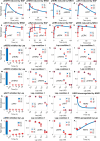
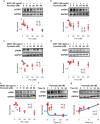
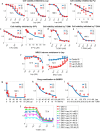
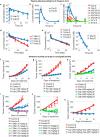
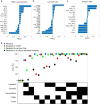

Similar articles
-
Trastuzumab-containing regimens for metastatic breast cancer.Cochrane Database Syst Rev. 2014 Jun 12;2014(6):CD006242. doi: 10.1002/14651858.CD006242.pub2. Cochrane Database Syst Rev. 2014. PMID: 24919460 Free PMC article.
-
Systemic treatments for metastatic cutaneous melanoma.Cochrane Database Syst Rev. 2018 Feb 6;2(2):CD011123. doi: 10.1002/14651858.CD011123.pub2. Cochrane Database Syst Rev. 2018. PMID: 29405038 Free PMC article.
-
A rapid and systematic review of the clinical effectiveness and cost-effectiveness of paclitaxel, docetaxel, gemcitabine and vinorelbine in non-small-cell lung cancer.Health Technol Assess. 2001;5(32):1-195. doi: 10.3310/hta5320. Health Technol Assess. 2001. PMID: 12065068
-
An Open-Label Study of Subcutaneous CpG Oligodeoxynucleotide (PF03512676) in Combination with Trastuzumab in Patients with Metastatic HER2+ Breast Cancer.Cancer Control. 2024 Jan-Dec;31:10732748241250189. doi: 10.1177/10732748241250189. Cancer Control. 2024. PMID: 38797949 Free PMC article. Clinical Trial.
-
Cost-effectiveness of CDK4/6 inhibitors in HR+/HER2- metastatic breast cancer: a systematic review and meta-analysis.Curr Med Res Opin. 2024 Oct;40(10):1753-1767. doi: 10.1080/03007995.2024.2402074. Epub 2024 Sep 21. Curr Med Res Opin. 2024. PMID: 39305463
Cited by
-
A mechanistic quantitative systems pharmacology model platform for translational efficacy evaluation and checkpoint combination design of bispecific immuno-modulatory antibodies.Front Pharmacol. 2025 Apr 10;16:1571844. doi: 10.3389/fphar.2025.1571844. eCollection 2025. Front Pharmacol. 2025. PMID: 40276607 Free PMC article.
-
Maytansinoids in cancer therapy: advancements in antibody-drug conjugates and nanotechnology-enhanced drug delivery systems.Discov Oncol. 2025 Jan 21;16(1):73. doi: 10.1007/s12672-025-01820-z. Discov Oncol. 2025. PMID: 39838217 Free PMC article. Review.
References
-
- Hurvitz SA, Hegg R, Chung WP, Im SA, Jacot W, Ganju V, et al. Trastuzumab deruxtecan versus trastuzumab emtansine in patients with HER2-positive metastatic breast cancer: updated results from DESTINY-Breast03, a randomised, open-label, phase 3 trial. Lancet. 2023;401:105–17. doi: 10.1016/S0140-6736(22)02420-5. - DOI - PubMed
-
- Dieras V, Miles D, Verma S, Pegram M, Welslau M, Baselga J, et al. Trastuzumab emtansine versus capecitabine plus lapatinib in patients with previously treated HER2-positive advanced breast cancer (EMILIA): a descriptive analysis of final overall survival results from a randomised, open-label, phase 3 trial. Lancet Oncol. 2017;18:732–42. doi: 10.1016/S1470-2045(17)30312-1. - DOI - PMC - PubMed
MeSH terms
Substances
LinkOut - more resources
Full Text Sources
Medical
Research Materials
Miscellaneous

